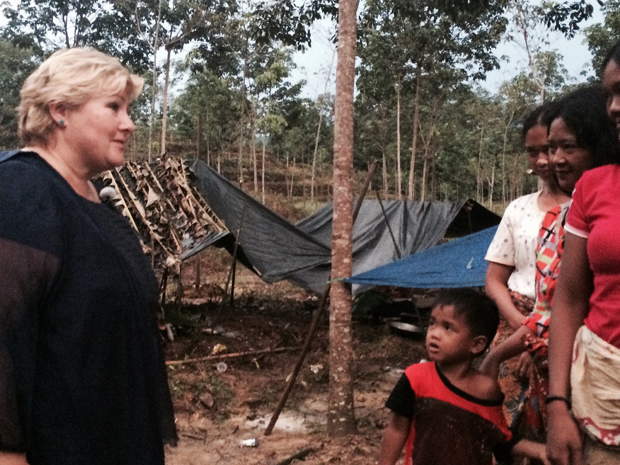For a second time Indonesia has extended the forest moratorium for another two years through The moratorium aims to combat rapid deforestation in Southeast Asia’s largest economy, preventing new clearing of primary forests and peat lands and contributing to protect valuable forests and drive sustainable development.
It was also decided that the Ministry of Environment and Forestry would study how it can further strengthen the moratorium.
When it was originally introduced in May 2011, the moratorium covered a period of two years and in return the government of Indonesia would receive a USD $1 billion donation through the UN-supported (and Norway-based) International and Climate Forest Initiative (known as the “USD $1 billion Indonesia-Norway REDD deal”).
However, as of yet Indonesia has only received USD $50 million due to disappointing results.
Preceding the previous extension, signed in May 2013, a broad public debate and several forums were organized by different organizations, such as UNORCID and WRI, to revisit the achievements of the moratorium and to discuss what should be the next steps, including, at that time, the moratorium extension.
Although the moratorium has been criticized for its weaknesses, it has been perceived by various stakeholders as an important initiative for improving management of forest resources – it has helped to “pause” “business-as-usual” patterns, and to give the government and other stakeholders more time to take actions needed for low-emission development. It was the first time that Indonesia committed to halt deforestation at a large scale, and in this way committed to improve forest governance.
“There has also been pessimism about the true impact of the moratorium and many doubt that Indonesia can achieve its target of having reduced carbon emissions by 26-41 per cent by 2020,” writes Indonesia-investments.com.

“One key problem is that the moratorium is overly focused on stopping the issuing of new forest-clearing permits. However, new forest-clearing permits are only responsible for about 15 percent of the country’s carbon emissions from deforestation in the period from 2000 to 2010. The remaining 85 percent of emissions originate from pre-existing permits and illegal deforestation. Prior to the introduction of the moratorium in May 2011, the government had already granted around nine million hectares of land to palm oil companies. As such, some big players in the country’s palm oil industry still have ample room for expansion as they possess large land banks (this also includes land that falls outside the scope of the moratorium).”
“Although the government’s support for the moratorium has put pressure on Indonesian companies to draft no-deforestation pledges, there are several other obstacles that hinder true implementation of the moratorium. These include poor law enforcement, and the lack of monitoring technology. Hence protected rain forests are still being cleared for agriculture. Partly, the government is to blame for this situation as it supports palm oil development (for example by raising subsidies for palm oil-based biofuels) and seeks food self-sufficiency (which cannot be realized without clearing land).”
Last time around, redd-monior.org wrote about existing loopholes that had not been addressed in connection to its extension.
“Despite the flaws in the moratorium an extension is better than a return to business as usual. But the President has missed out on a chance to strengthen the moratorium.”
The two-year moratorium was set up under the US$1 billion Indonesia-Norway REDD deal. It covers a total area of more than 65 million hectares. But the vast majority of this area is already protected. Nevertheless, the moratorium (in theory at least) protects an additional 14.5 million hectares of forest for another two years.
“However,” wrote red-monitor.org, “the Presidential Instruction extending the moratorium repeats the loopholes from the previous moratorium. In addition to the fact that the moratorium only applies to primary forest and not to secondary forests, it specifically does not apply to:
- Existing concessions or concessions that already ‘received approval in principle’ from the Minister of Forestry.
- ‘National development’ projects including: geothermal, oil and gas, electricity, land for rice and sugar cane.
- The extension of existing permits.”
In May 2010, the governments of Indonesia and Norway concluded a Letter of Intent on “Cooperation on reducing greenhouse gas emissions from deforestation and forest degradation” (hereafter “the Agreement”). Norway pledged to contribute up to USD1 billion to support Indonesia’s REDD+iii efforts. Structured in three phases, the Agreement anticipated piloting of performance-based payments for verified emission reductions at the provincial scale by 2012, and at the national level by 2014.
Indonesia made a commitment to establish a moratorium on licensing forest exploitation as part of the negotiations with Norway, and also agreed to institutionalize broader policies to deal with emissions from deforestation and degradation by creating a new agency reporting directly to the president.
